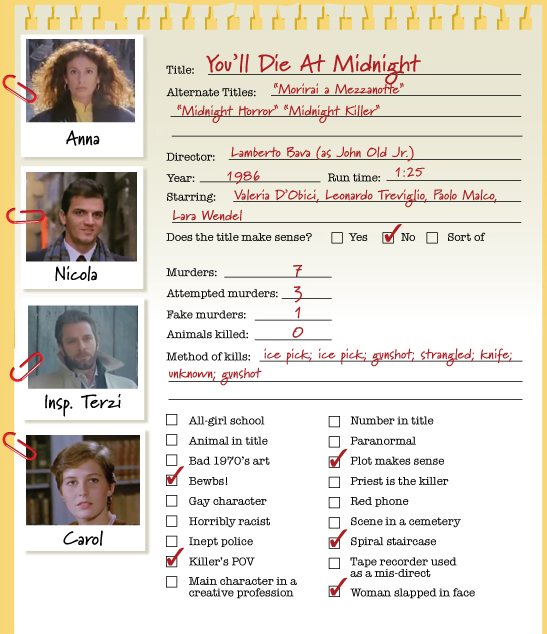"What did Irina tell you? That she shares her bed with a crazy alcoholic murderer?"
Irina Rouvigny (Anita Strinberg) has a rough life. Her unloving husband Olivero (Luigi Pistilli) is a failed writer with an Oedipal complex who drinks too much, sleeps around, and parties every night with the hippies from the local campgrounds. She lives in a crumbling mansion and even the cat, Satan, seems to have it in for her. When Olivero's young mistress and then the maid turn up dead, Irina suspects her husband, but still helps him cover up the crimes, hiding bodies in the cellar. Things get more complicated when Olivero's hot-blooded niece, Floriana (Edwige Fenech) shows up for an extended visit. Floriana proceeds to seduce Irina and her own uncle (plus a young motorcycle racer), taking both sides and plotting with each to kill the other. But who is playing who in this game of cat and mouse?
The story is based on Edgar Allan Poe's "The Black Cat," (though very loosely) and he even gets a screenwriting credit. Anita Strinberg gets all my respect for heavily downplaying her beauty for this role. For most of the movie she looks like a strung-out Ann-Margaret. Also, let's address the dozens of flash-cuts of the cat's eyes (or "eye" after Irina gouges one out).
- Edwige Fenech made this movie the same year as The Case of the Bloody Iris and her range between the two movies is amazing. Here, she's a young, self-assured schemer in complete control of everything while in Iris, she plays a shy, nervous, more mature woman lost in victimhood.
- In the film, Olivero shuts himself in his study writing and Irina later sees that he has been typing the same psychotic phrase over and over for page after page: "Kill her and hide her in the cellar wall." Sound familiar? Note that this movie came out five years before Stephen King published The Shining and eight years before Stanley Kubrick's film adaptation.
- As one YouTube commenter writes, one could easily turn the flash-cuts of the cat's eyes into a drinking game. You'd be drunk before you know it.
- The title has nothing to do with this film, but it does come from an earlier Martino-Fenech collaboration. The phrase "Your vice is a locked room and only I have the key" appears in a note from the killer in The Strange Vice of Mrs Wardh (a.k.a. Blade of the Ripper).
What the Hell Am I Watching?
The craziest scene in the movie is right at the beginning. Drunk, angry Olivero gets his party guests to dump their drinks into a bowl and humiliates his wife by forcing her to drink it. Then he sexually harasses the maid as the party guests sing a creepy, taunting song and one young woman strips naked and dances on the table. This scene effectively sets up the creepy atmosphere of the film.
Fashion Moment
There's not much glamor to report here, since the characters are a bunch of downward-spiraling depressives. All the women try on Olivero's mother's 18th Century costume at some point and that's the nicest article of clothing in the film.

































